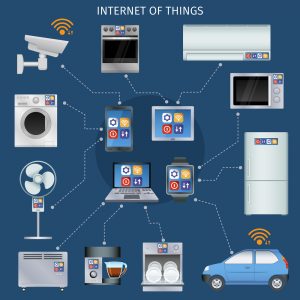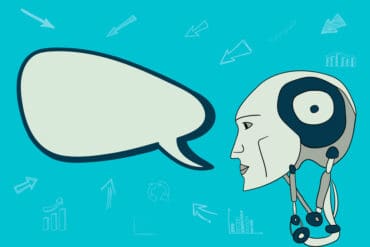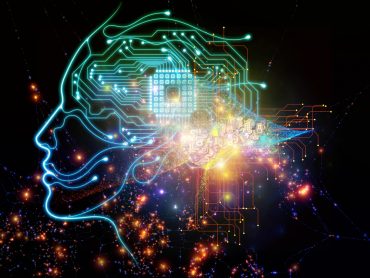
Better security and faster, more efficient computing of big data means that industries will focus on holistic IoT adoption instead of piecemeal solutions.
IoT has been on the hype cycle the past few years – emphasis on “hype” and not a lot of delivery. Sure it’s glamorous to have connected water bottles or homes that predict thermostat temperatures based on when you sleep and wake up, but (while fun) these are still surface-level implementations. One of the biggest trends coming in IoT is going to be IoT itself, or rather, its full utilization.
The Past: Surface Connections, Impossible Data, and Security Issues
The public got a little laissez-faire with our information in the early days of social media, and that approach followed us into the realm of IoT. But just like Facebook’s brush with Cambridge Analytica, IoT lost a bit of shine over high profile security cases like Jeep Cherokee’s UConnect hack and the Mirai virus.
See also: Kapersky: Over 100 Million IoT Attacks Detected in Six Months
With billions of connected devices, consumer-facing, and industry-specific, expected to come into play by 2025, connectivity will have to work better than the cloud-based firewall we have now. Our current capabilities involve directing information to the cloud and then back to the device, leaving the pathway open for significant issues.
But IoT is more than just fun device upgrades. A few key advancements will be able to propel IoT into its full potential for 2020 and beyond. Our trust with connectivity has taken a lot of hits. The hype cycle around IoT is full of sweeping generalizations and inaccurate information. Businesses are lost for how to take advantage of what’s happening. Cities are trying to green, but it’s hit or miss. And in spite of all of this, new advancements could finally unlock IoT’s true potential. Let’s take a look.
AI-Driven Big Data
IoT connected devices are going to give us greater access to big data. We had no idea how to sort through it all before and couldn’t process it even if we wanted to. Now that we have AI-driven programs designed to make sense of these billions of continuous data points, IoT may offer us the type of continuous intelligence we’ve dreamed about.
Businesses could use continual intelligence to make real-time decisions based on actual analytical data insights distilled from the processing power of AI. It’s the BI of our dreams. These algorithms extract more data from these distributed systems without huge increases in human labor, freeing humans up to handle higher-order decisions based on that data processing. IoT has changed how we view computing and in return, given us the power to harness the data IoT produces.
Human teams can use data from distributed systems to make better decisions in real-time. Whether it’s monitoring and altering a course of treatment or identifying a trend before it’s a thing, human teams are freer to take those insights and apply them to real solutions.
Decentralization
These distributed systems are security risks for low priority items – consider someone hacking into your air conditioning in your smart home – but when it comes to things like medical implants or nuclear management, what then?
Billions of new IoT devices will put a significant strain on traditional centralized systems, affecting scalability and leaving those devices open to attack. A better system uses blockchain, an inherently more secure architecture with proof of action fail-safes built right in. Blockchain’s distributed ledger system is scalable and workable in a universe with so many connected devices.
The rise of edge computing also makes IoT scalable for the future. IoT devices put so much stress on centralized systems, but powerful edge computing devices are becoming more affordable. And for the first time, on-device AI is looking like a real possibility.
An enormous plus of decentralization has nothing to do with industry scalability and everything to do with restoring customer trust in the system. We’re tired of seeing our data out there and tired of continual security breaches that put us at risk. With decentralization, we have better security overall – a complete overhaul of how we view our place in a fully connected world.
Consumers already view companies with a healthy dose of mistrust. We can’t even stay loyal to our household brand names anymore. Brushes with security threats will end the unwritten contract between consumers and a company lightening quick. Blockchain and edge computing could take the power differential out of the hands of corporations and provide consumers the chance to rebuild their trust and step into the connected system again.
Industry-Wide Adoption
Better security and faster, more efficient computing of big data means that industries will focus on holistic adoption instead of piecemeal solutions. For example, cities are currently in a race towards IoT capability, the “Smart City,” in which these connected devices provide data and feedback for efficiency and safety.
As 5G rollouts make the data transfer faster, our connected cities become a bigger reality. Transportation and maintenance are the precursors because road maintenance has proven an enormous beneficiary of industry-specific IoT. With this industry-specific IoT, we build smarter, more efficient cities and help reduce our environmental footprint.
Day to day city operations are also on the line. The things you don’t notice, from predictive maintenance of public structures to greener buildings, help cities become more sustainable places. We consider how our activities affect the environment and the overall stability of a city and use both big data and IoT devices to plan citywide operations more efficiently.
It’s not just cities. Industries are taking those same capabilities and turning it on non-customer facing processes. Everyone knows about predictive maintenance in smart elevators, but were you aware that the energy grid can harness the same IoT power across connected devices to better manage and predict power needs? That capability can make the future of our cities potentially safer.
Moving Forward with IoT
Really, the potential with IoT is moving from a trendy news piece to the interconnected potential we’ve wanted from the start. Think about it. How do we connect our things both consumer-facing and behind the scenes for brilliant analytics and performance while protecting our 21st-century privacy? By blending decentralization with AI-driven big data, we might find our way there quicker than we think.
Our connected cities will be one new development to come out of this built up trust. We want our devices to work for us, and we want our environment to hum along without hiccups, but that will require we trust the system again. With blockchain moving out of cryptocurrency into the world of IoT security, that could happen.
As IoT evolves, the biggest of all will be the sweeping implementation of IoT. As the movement builds, cities, industries, and consumers are discovering ways in which IoT helps us make better decisions. We move around in our environment with less impact and implement augmented intelligence to help us plan out everything from massive maintenance projects down to thermostat settings in a single house. It’s a brave world.




























